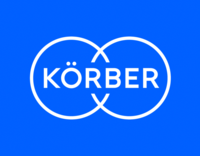
Unfortunately, it’s not always easy to determine where noise actually comes from. However, Hauni from Körber’s Business Area Tobacco has found a solution for this problem. Known as the “acoustic camera,” this system enables the sources of irritating noises to be made visible in photos or videos so that they can be precisely localized. Like a normal film camera, the acoustic camera is set up in front of the machine in question. However, the camera doesn’t film the machine. Instead, it uses sensors to measure the soundwaves that it emits. “Wherever we detect unusual sources of noise, it either means that the machine isn’t running properly or the sound insulation is insufficient,” explains Adam Budde, who is responsible for the acoustic camera at Hauni’s development department.

















